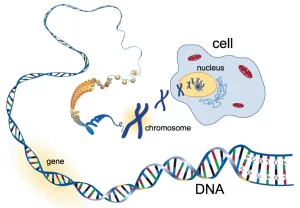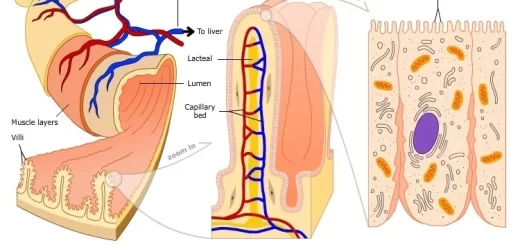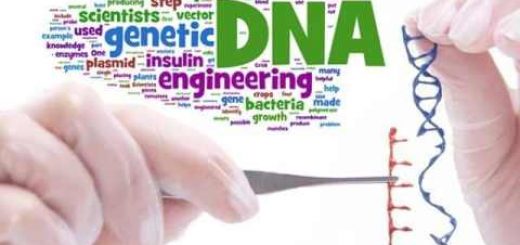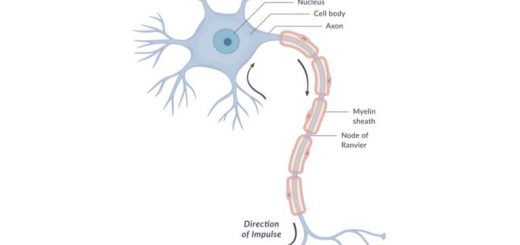Dominant and recessive trait, DNA, Genes, Genetically modified rice and human genome project
DNA is the source of genetic information of the living organism because DNA consists of genes that are responsible for the appearance of genetic traits of the living organism, The enzymes play an important role in the appearance of hereditary traits because every gene gives a special enzyme that is responsible for the occurrence of a chemical reaction resulting in a protein showing a specific hereditary trait.
Dominant & recessive traits in the human being
Scientists found that many human hereditary traits follow Mendelian heredity. where the trait is controlled by one pair of genes.
- The individuals that inherit at least one dominant gene from one of their parents, will have the dominant trait.
- Those who receive a recessive gene from both parents, will have the recessive trait.
Some traits appear on offspring, but do not appear on their parents because there are recessive traits that do not appear in parents but they appear in the offspring when the two genes of these traits aggregate together. Some of the human traits that follow the principle of complete dominance:
- Tongue: The ability to roll the tongue is dominant, and the inability to roll the tongue is recessive.
- Earlobe: Free ear lobe is dominant, and the attached ear lobe is recessive.
- Nature of hair: Curly hair is dominant, and (Straight) Smooth hair is recessive.
- Colour of hair: Black hair is dominant, and Light colour hair is recessive.
- Size of eyes: Wide eyes are dominant, and Narrow eyes are recessive.
- Colour of eyes: Brown eyes are dominant, and Coloured eyes (Blue, green, grey) are recessive.
- Check dimples: Dimples are dominant, and No dimples are recessive.
- Facial freckles: No freckles are dominant, and Freckles are recessive.
The ability of rolling the tongue is from the dominant traits in the human being because the gene of the ability to roll the tongue dominates over the gene of the non-ability to roll the tongue if they are both present in an individual. The curly hair trait dominates over the smooth hair trait because the gene of curly hair dominates over the gene of smooth hair when they aggregate together.
If one individual inherited from one of his parents the gene that carries the curly hair trait, so this individual will be with curly hair because the gene of curly hair is a dominant gene, its trait appears if it exists with another similar dominant gene (curly hair) or a recessive gene (straight hair).
The free ear lobe is dominant over the attached ear lobe because the gene of the free ear lobe dominates over the gene of the attached ear lobe if they are both present together in an individual. The wide eyes trait dominates over the narrow eyes trait in human because the gene of wide eyes dominates over the gene of narrow eyes if they are both present together in an individual.
It is possible for two parents to have free ear lobe produce offspring have attached ear lobes because both parents are hybrid, so the dominant trait (free ear lobe) appears on them, but when the two factors of recessive trait (attached ear lobe) aggregate from each of them, this trait appears in offspring.
The chemical structure of nucleic acid (DNA)
The cell nucleus contains chromosomes. The chromosome chemically consists of a nucleic acid (DNA) combined with protein. DNA (nucleic acid) carries the hereditary (genetic) traits of the living organism. Scientists have found that the nucleic acid (DNA) consists of small parts called “Genes“. Genes are parts of DNA present on the chromosome inside the cell nucleus, and they are responsible for appearing the individual’s hereditary traits. Genes consist of smaller structural units called nucleotides.
Model of Watson and Crick for the composition of DNA molecule
The scientists Watson and Crick were able to make a model of the DNA molecule. DNA molecule is composed of two strands coiled around each other forming a double helix shape.
How do the genes perform their functions?
The scientists Badel and Tatum discovered the means of how the genes control the appearance of genetic traits. The two scientists received for that a Nobel Prize in the year 1958.
Mechanism of action of the gene
How do the genes control the appearance of genetic (hereditary) traits?
Every gene gives a special enzyme, This enzyme is responsible for the occurrence of a chemical reaction, Each chemical reaction resulting a protein showing a specific hereditary trait. The following diagram shows the mechanism of action of the gene:
Gene gives → Enzyme responsible for the occurrence of the chemical reaction → resulting Protein→ showing A specific hereditary trait
Applications
Inheritance of the trait of brown eyes colour “Dominant trait”: When a person inherits from one of his parents, the gene responsible for the appearance of the trait of brown eyes colour, So, this gene gives an enzyme which is responsible for the occurrence of a chemical reaction resulting a protein works on the appearance of the trait of brown eyes colour.
Inheritance of the trait of black hair colour “Dominant trait”: When a person inherits from one of his parents, the gene is responsible for the appearance of the trait of black hair colour. So, this gene gives an enzyme which is responsible for the occurrence of a chemical reaction resulting a protein works on the appearance of the trait of black hair colour.
Genetic engineering (Biotechnology)
Genetic engineering is one of the branches of modem genetics and one of its most important applications in the field of medical agriculture is the production of genetically modified rice to combat diseases caused by malnutrition.
Genetically modified rice
Around 500.000 people every year are affected by losing their sight in developing countries (Southeast Asian countries) due to malnutrition caused by a deficiency in vitamin (A). It is one of the important elements of nutrition, whose deficiency leads to malnutrition.
Deficiency in vitamin (A) is widespread in those who depend on eating rice because rice does not contain pro-vitamin (A) which is known as carotene, which is converted into vitamin (A) inside the body. This health problem has been solved by the production of genetically modified rice containing carotene.
Scientists are interested in creating genetically modified rice because normal rice doesn’t contain a carotene substance that changes inside the body into vitamin (A), which its deficiency in the body that leads to losing sight.
What is the scientific basis for the production of rice containing carotene?
Modifying the genetic composition of the rice crop by inserting the genes that result in the creation of the pro-vitamin (A) compound inside the tissue that stores starch in the rice grains.
The human genome project
The human genome is a genetic map that shows the complete set of genes that are present on the human chromosomes.
The aims of the project
This project started in October 1990 to obtain a detailed very precise map for the sequence of the nitrogenous bases to be able to:
- Determination all the human inheriting factors (genes) and identification various hereditary functions to the human.
- Identification of the genes responsible for various diseases like cancer, diabetes, vascular diseases, mental diseases.
- Determination of various mutations on the function of the genes.
- Understanding human biology and identifying the single differences in the genome between one person and another.
The results of the project
This project showed the similarity of humans in more than 99% from the sequence of nucleotides of DNA, therefore the single differences in humans such as: the colour of eyes, colour of skin, height, and other traits form a very small percentage of this sequence.
Despite the small percentage of these differences, they affect to a great extent the acceptance of the individual to:
- The harmful environmental effects like bacteria, viruses, poisons, and chemicals.
- Medicines and various treatments.
You can follow science online on Youtube from this link: Science online
You can download Science online application on google Play from this link: Science online Apps on Google Play
Hormones in the human body, Function of Endocrine glands & Growth hormone disorder
Packaging of DNA, Genome, chromosomal proteins, DNA in Prokaryotes & Eukaryotes
Regulation of the cell cycle, DNA synthesis phase, Interphase & Mitosis
Genes, Chromosomes, Proteins, Bacteriophages & Quantity of DNA in the cells
Principle of complete dominance and Law of segregation of factors (Mendel’s first law)
The principle of complete dominance and Law of segregation of factors (Mendel’s first law)
Genetically Modified organisms (GMOs) uses, advantages and disadvantages




